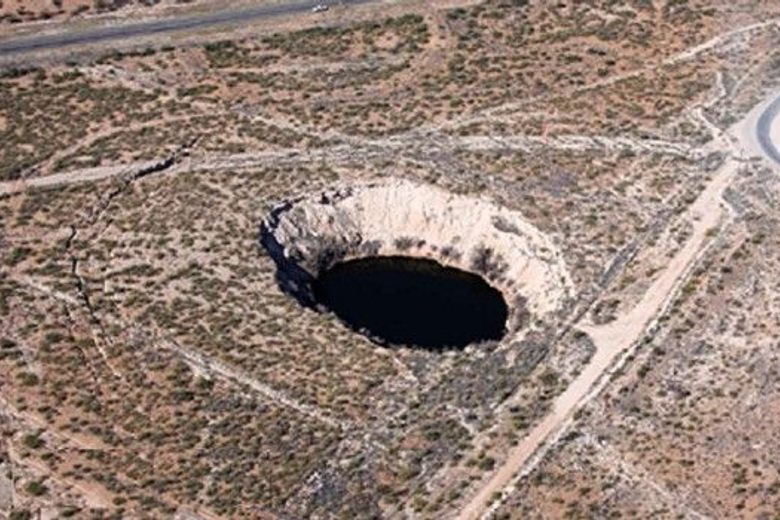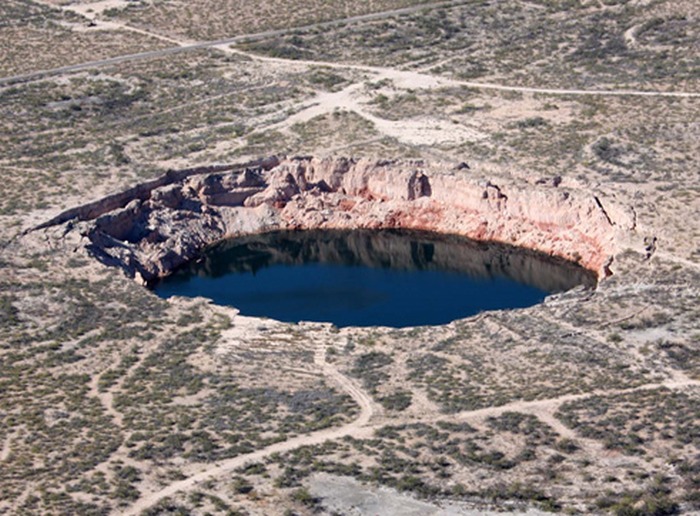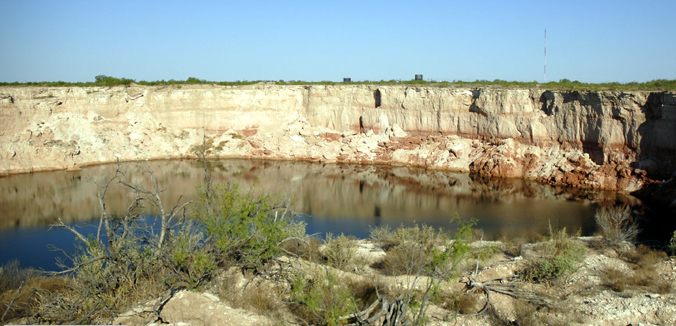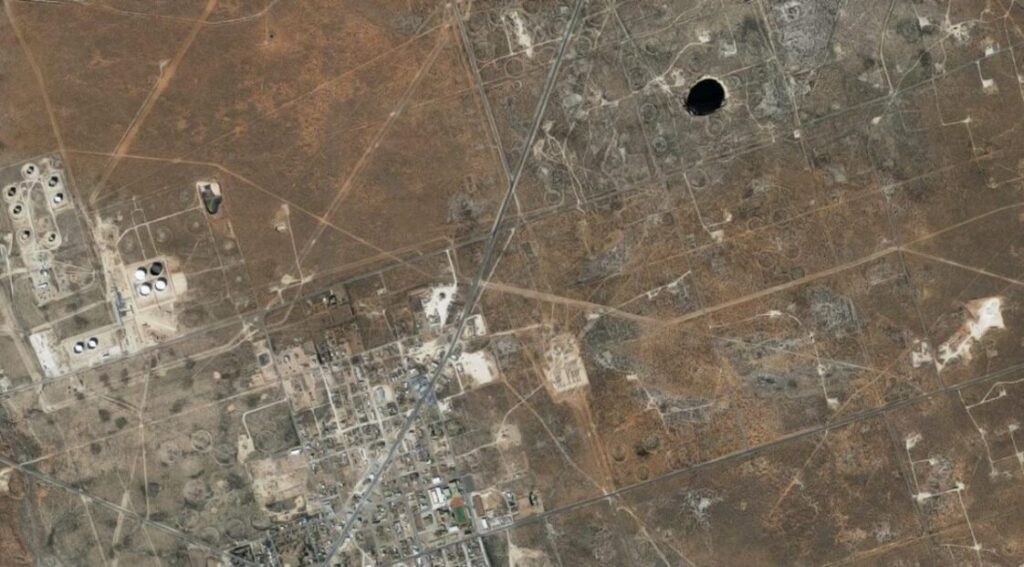
Two breathtaking giant sinkholes in Texas have long been objects of fear and fascination.

Wink Sink 1 from above. Image courtesy of The University of Texas at Austin’s Bureau of Economic Geology
An extraordinarily unstable local terrain has been created as a result of decades of drilling for oil and gas in Winkler County in the West Texas desert, particularly during the peak years between 1926 and 1964. Since that time, freshwater has migrated far down, dissolving interspersed salt layers and resulting in a variety of problems. The notorious Wink Sinks, a pair of enormous sinkholes that are actually expanding, are two of them.
The two holes have long been a source of worry for local officials because of their expansion; they worry that if they finally merge into one, the result might be a catastrophic collapse.

The first sinkhole, known as Wink Sink 1, appeared on June 3, 1980, measuring 360 feet (110 meters) across and 112 feet (35 meters) deep. The sinkholes formed more than twenty years apart.
On May 21, 2002, Wink Sink 2 emerged about a mile to the south of Wink Sink 1, gobbling up a water well, some pipelines, and the surrounding desert. Since then, it has expanded from having a surface width of 450 feet (137 meters) to reaching a maximum width of 900 feet (274 meters).

Research done in the last 10 years — including analysis of radar images taken from a satellite — have made it all too clear that the holes are still growing, and land around them is sinking — likely due to a mix of geology and human intervention.
This means that not only could the two existing sinkholes eventually converge into one, but new holes could also form.

With the exception of certain oil and gas equipment and sections of road that pass close to them, neither of the sinkholes has so far threatened any homes or businesses. This could be the cause of the fact that, for the time being at least, people in the surrounding towns of Wink (population: 940) and Kermit (population: 6,000) appear to be handling the situation pretty stoically and aren’t very concerned about what might be in store for them.

Even though the two towns are not currently directly threatened, a collapse could be disastrous. Such an event could unleash hell on the surrounding communities because the area around the holes is densely populated with oil and gas production facilities and installations, as well as hazardous liquid pipelines.
Geophysicists continue to keep a close eye on the situation because of this.

Naturally, the companies that profit(ed) from over-extraction will not be held liable for damages or restoration (if that is even possible. The easiest out is to sell the properties or declare bankruptcy. Given the strength of the oil lobby in Texas, the taxpayers will ultimately suffer the consequences.
Yes.
With increased seismic activity in the area, I would assume they will begin expanding at a faster rate. Any holding tanks in the area should be moved & active lines should be capped. Prepare for the worst & hope for the best